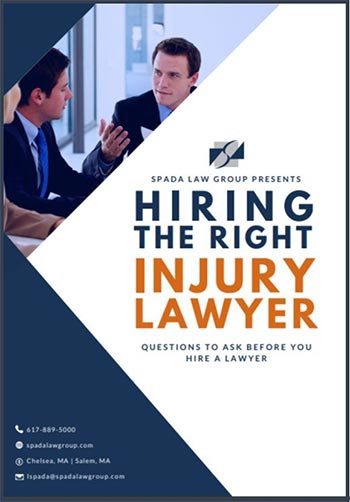Motorcycle fatalities continue to rise each year, according to the Motorcycle Safety Foundation (MSF). From 1997 to 2009, motorcycle deaths rose an average of 10% yearly in the United States. Motorcycle fatalities once accounted for about 5% of all traffic deaths but now account for 13% of overall traffic fatalities.
Motorcycle safety has always been important, but the need to hone skills to help you be the best rider has never been greater.
Based on data presented at a 2013 conference, MSF revealed the percentages of near-crash types.
Table of Contents
The Top 5 Types of Near Crashes for Motorcyclists
- Vehicle changes lane into motorcyclist’s path or lane (both vehicles in motion) (about 30% of all near-crashes)
- Cars pull out of cut-off motorcyclists (about 12% of all near-crashes)
- A vehicle ahead stops or slows suddenly (about 8% of all near-crashes)
- Vehicle entering motorcycle lane from the right (other than an intersection) (about 8% of all near-crashes)
- The car turns left into the motorcyclist’s path (about 7% of all near-crashes)
The most common rider responses to near crash events include braking, no response or action, swerving, deaccelerating, or honking the horn. According to MSF’s study, motorcyclist errors were only indicated in about 7% of all near-crashes — which shows that motorcyclists must take safety seriously as they are often at the mercy of their environment and other vehicles.
Because crashes are more common and drivers are only getting more distracted, there has never been a more critical time to make sure you’ve mastered the skills you need to keep yourself safe when riding.
5 Essential Motorcycle Riding Skills to Master for Safety
Periodically refreshing your riding skills is essential to put into practice. Generally speaking, three major areas of riding skills that are critical to master are braking, turning, and swerving. Mastering these skills will help you avoid hazards, accidents, and help you maneuver your motorcycle through traffic each day.
I will dive into five specific skills every rider should develop to stay safer and reduce accidents. These are skills that, even once developed, you should continue to practice to increase your skills and keep them sharp.
1. Head & Eyes: Look Where You Want To Go
This is one of the most critical motorcycle safety skills, yet it is one that many riders rarely do. When riding, you should look where you want to go, not just with your eyes, but by actually turning your body and pointing your nose where you want the motorcycle to go.
Riding this way will help you ride more smoothly, help with cornering, making sharper and smoother U-turns, and much more.
By looking at where you want the motorcycle to be next and by pointing your nose in the direction you want to go, you will be able to see any obstacles on the road much sooner.
Bonus tip: generally, it’s also a good idea to practice turning skills, including basic turns, sharp turns without stopping, and sharp turns from a stop.
2. Following Distance
A safe following distance is leaving a minimum of 2 seconds of following distance between the vehicle in front of you. That means once a car passes a marker, you should not pass that same marker for 2 seconds. A 2-second following distance is for an experienced rider with excellent braking skills in ideal conditions. If you’re not an experienced rider (or conditions are not ideal), increase your following distance.
Keeping a safe following distance helps you to be able to see what’s ahead of you on the road rather than getting stuck with only being able to react to changes in the environment as you immediately encounter them.
If you don’t leave the proper following distance, you’ll be completely blind to everything on the road ahead.
When you follow a vehicle in front of you too closely, you cannot see what’s going on on the road ahead. Sometimes, motorcyclists will follow the car immediately in front of them closely, and in front of that car is a larger car, truck, or even a U-haul. In this scenario, you are totally blind to what is ahead of you on the road.
By following cars too closely and not keeping the proper following space, you’re making your life far more dependent on the driver’s decisions on the road ahead. It is important to back up and give yourself the time needed to respond and adjust instead of limiting yourself to only having time to react.
3. Slow Speed Skills
Developing strong slow-speed skills will significantly improve your riding skills and reduce your risk of accidents. Slow speed maneuvering practice helps motorcyclists develop clutch and throttle control, body control, and head and eye placement, all while at reduced risk compared to being out on the street.
It is harder to ride a motorcycle slowly, so developing skills at slow speeds makes it much easier to translate to riding with speed and will help you be much safer on the road.
Bonus tip: other skills to spend time practicing to hone are obstacle avoidance skills like weaving and swerving.
4. Emergency Braking
In general, braking is a necessary skill to master. All riders should practice braking in these scenarios:
- A regular stop in a straight line and on a curve
- A quick stop in a straight line and on a curve
On top of strong braking skills, emergency braking is a fundamental skill all riders need to know and master. Other people using the roads often will make poor and even stupid decisions that will impact your path of travel. To have the skill when you need it, you must practice it ahead of time, so it is second nature when you encounter an emergency.
5. Cornering
Learning to turn your bike into a corner is a fundamental skill as a motorcyclist. MSF teaches a simple and effective technique: Slow, look, press, roll.
- Slow: when approaching a corner, slow to your entry speed
- Look: after you slow down, you will look (by pointing your nose as discussed above) where you want the bike to go
- Press: press on the hand grips to make your turn
- Roll: roll on the throttle to increase your speed or keep your maintenance speed through the corner
These top five skills every motorcyclist should hone will also help riders develop additional essential skills such as clutch and throttle control, U-turns, always having an escape path, and more.
Were You Injured In A Motorcycle Accident? Schedule A FREE Consultation Today
If you were injured in a motorcycle accident, it’s important to remember that you are not automatically at fault. But due to motorcycle bias, you will need to work harder to prove your case, which requires the skill of an experienced motorcycle accident lawyer.
At Spada Law Group, we have helped countless riders obtain the compensation they deserve after being involved in a motorcycle crash. We want to help you too.
Contact us today for a free consultation and let us put our experience to work for you. We service the entire state of Massachusetts and have offices in Chelsea, Peabody, Worcester, and Newburyport. If coming to our office is inconvenient, we can handle your entire case virtually through Zoom, so do not let geographical distance stop you from getting the help you deserve.



